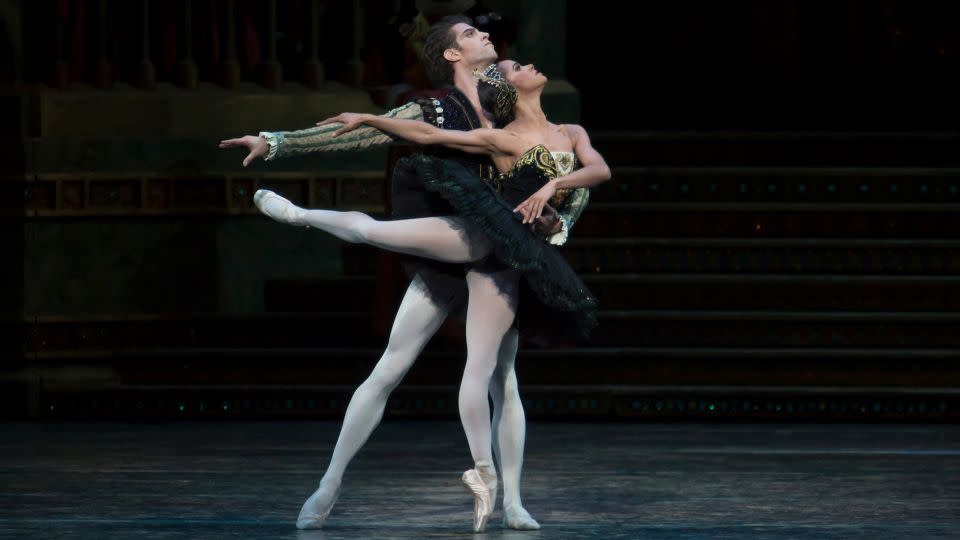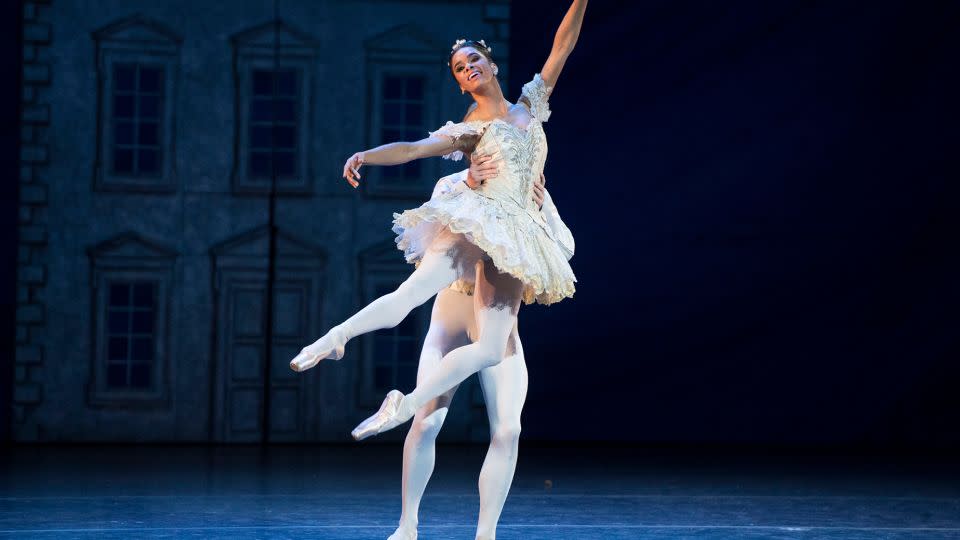Misty Copeland reflects on the ‘generational trauma’ felt by Black ballet dancers
Misty Copeland has grown used to having the spotlight on her at center stage.
In 2015, Copeland sprang into the highest echelons of dance when she became the first African American woman to be a principal dancer with American Ballet Theatre, one of the most prestigious and well-renowned dance companies in the world.
“I spent the first decade of my professional career with American Ballet Theatre, the only Black woman in the company – a company of almost 100 dancers,” Copeland told CNN’s Chris Wallace in a new episode of Max’s “Who’s Talking to Chris Wallace?”
Being the first is a difficult, but familiar position for Copeland, who’s often spent her dance career as one of the only Black dancers in the room or on stage.
“I’ve experienced, you know, difficulties being a Black woman when you stand out, especially in the corps de ballet when it’s supposed to look uniform, and everyone kind of in the same tones wearing pink tights, which represent the color of your skin. And that wasn’t always the case.”
There were also instances of discrimination that could have easily turned Copeland away from dance all together.
“There were times that I was not cast in certain roles because I would stand out too much and kind of ruin the aesthetic, especially if it was a performance that was being filmed,” Copeland told Wallace.
Yet, in the fall of 2014, almost a year before she would become a principal dancer, Copeland would make history as the first Black ballerina to perform the lead role of “Odette/Odile” in American Ballet Theatre’s “Swan Lake.”
It’s a prized role coveted by dancers in one of the world’s most popular classical ballets. But, Copeland said, as a Black ballerina her casting also stirred mixed emotions.
“I think about this kind of generational trauma for Black dancers that comes with that role,” she said. “We’ve been told, for so many decades and generations that the swans should be white, that that’s not a role that can be played by a Black or brown woman.”
Copeland said she worried that “if my artistic excellence isn’t up to someone’s standards, that maybe there won’t be another Black woman at American Ballet Theatre who is given this opportunity. And that was something that weighed on me leading up to that first performance.”
But the performance was a triumph. A New York Times review of Copeland’s turn as Odette, praised the “moments of courage and grandeur” that she brought to Swan Lake.
“It’s about bringing yourself to these things, to these roles and making them your own. And I feel that that’s what I’ve done with a lot of the roles I’ve taken on, but especially Swan Lake,” Copeland told Wallace.

Amid her meteoric rise in dance, Copeland said she still dealt with conversations about her skin tone and even questions about lightening her skin on stage – a challenge she says generations of Black and brown dancers have faced in classical ballet.
“They make you lighten your skin. And you know, over years and years of doing this, I had serious conversations with the artistic staff of ABT and our hair and makeup department.”
Copeland said it is a common practice in ballet to use make up to make a dancer’s skin look matte.
“I said, ‘Well, why does that have to mean white?’ And that’s something that the conversation has evolved to kind of change what that means.”
Like another barrier-breaking icon who was a first in their field, Copeland has often been called the “Jackie Robinson of ballet.” She said the comparison makes her feel “a lot of pressure,” but she also believes her position in ballet is larger than just her or any one person.
“To me, it’s not just about being the first — there have been so many Black women who have done incredible things for the ballet community, the ballet world, but haven’t been acknowledged,” she told Wallace.
Since her career-defining turn in Swan Lake, Copeland has used her status to shine a spotlight on Black women and the diversity in dance, changing the perception of who can be a ballerina.
“You shouldn’t have to have a certain body type. You shouldn’t have to have a certain color skin or be a specific age. If you have the right dedication and commitment and support – I think anyone should be able to do this.”

Copeland founded the “Life in Motion Productions,” in 2015, which aims to bring a “more diverse representation of artists within the traditional and new media landscapes.”
And in the last two years, Copeland produced and starred in the short film “Flower” and executive produced the short film “Don’t Touch My Hair!”
She also offers ballet classes to the Boys & Girls Clubs of America through the Misty Copeland Foundation. The program is a full circle moment – the Club is where she was first introduced to ballet.
“I hope that this is an hour of their day, that is the best and brightest of their day,” she said. “There are so many things that go on and children’s lives but especially these children’s lives.”
But through each of her different endeavors from producing to philanthropy, Copeland says her mission and goal remain the same: “It’s to bring ballet to more people. It’s to allow people to experience dance in a beautiful and positive way and just to feel the joy of it all.”
Wallace’s entire conversation with Copeland is airing now on Max.
For more CNN news and newsletters create an account at CNN.com


